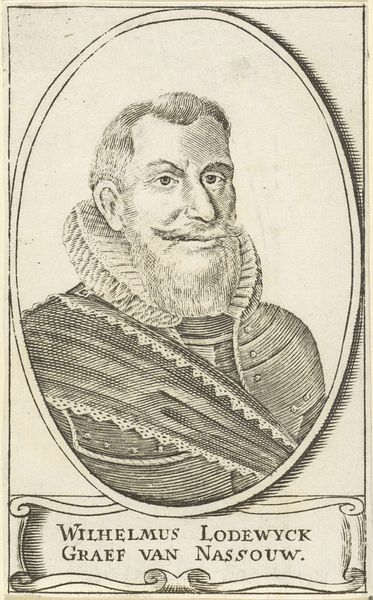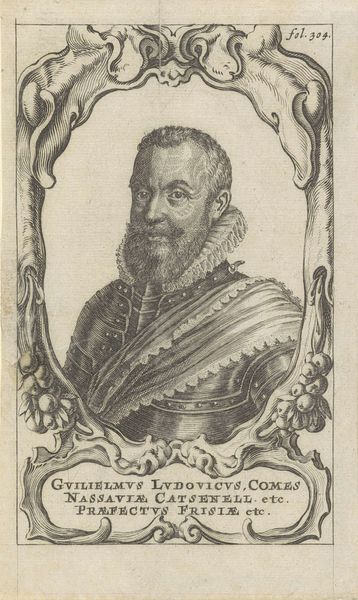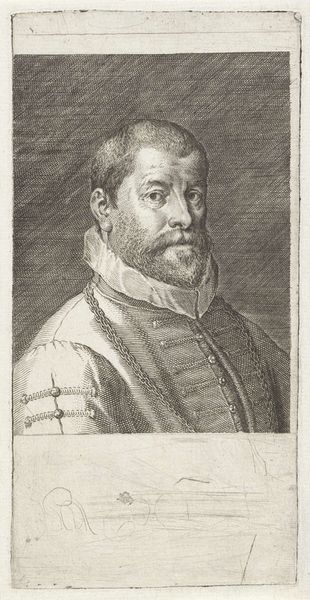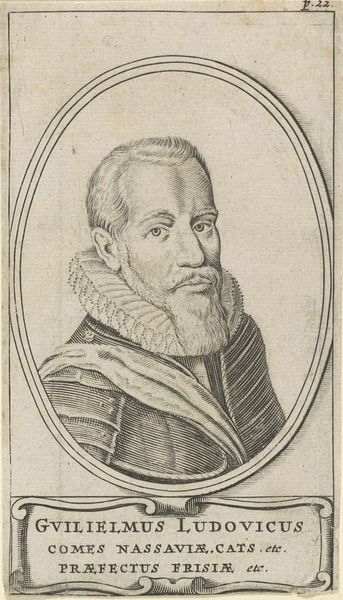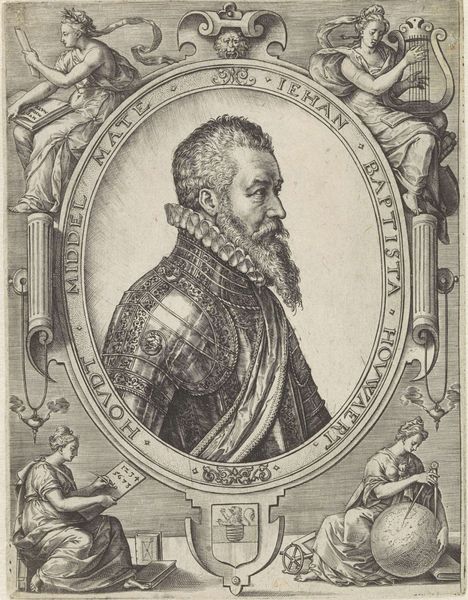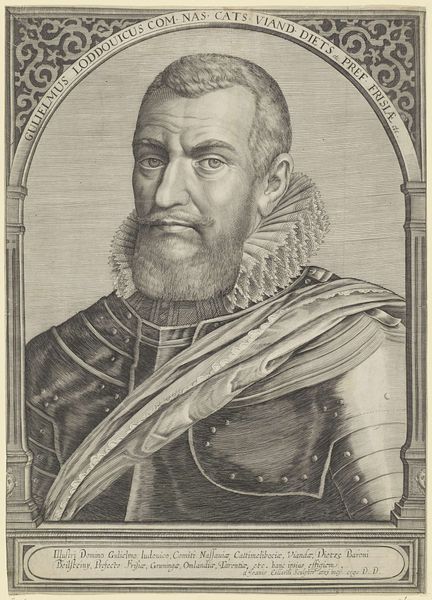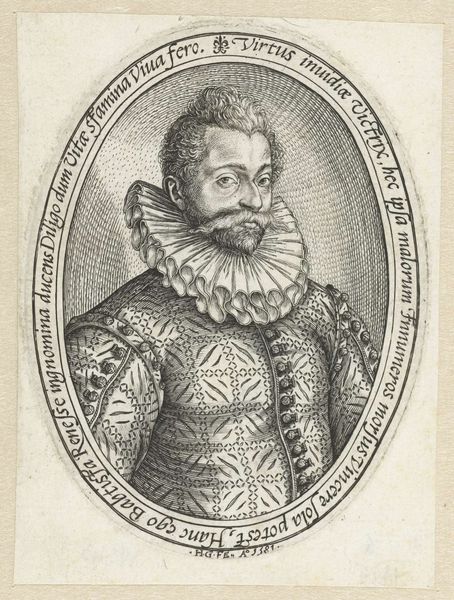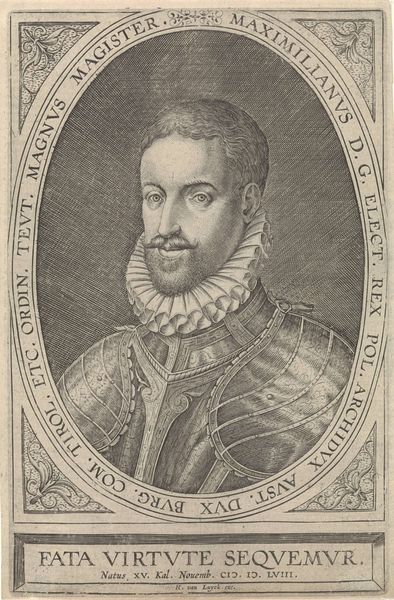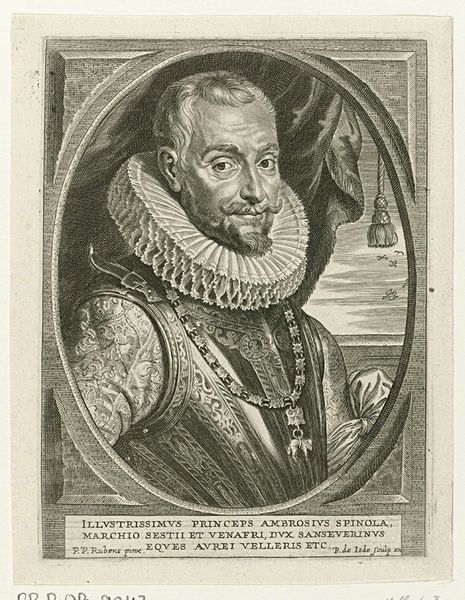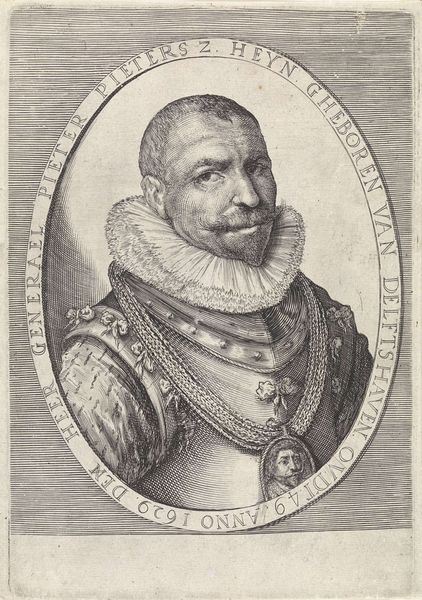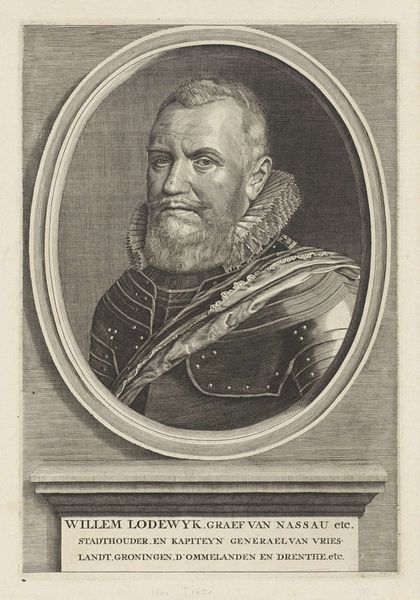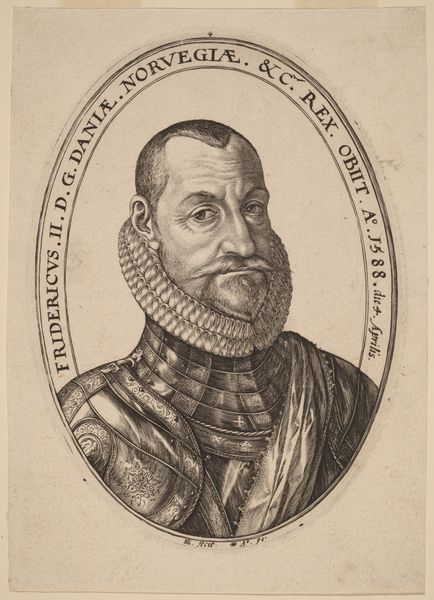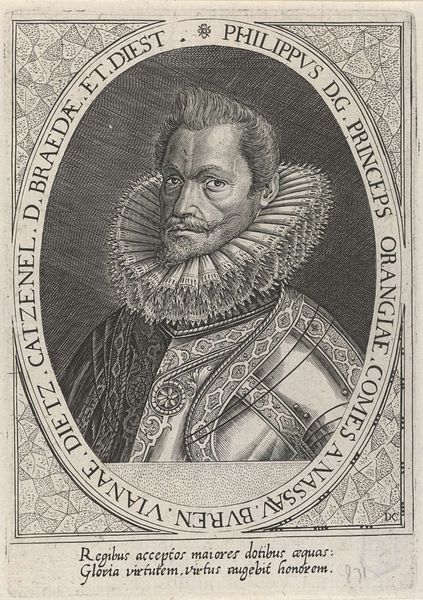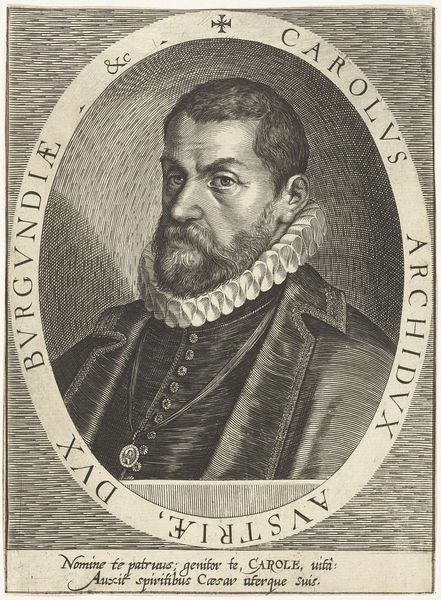
engraving
#
portrait
#
baroque
#
figuration
#
form
#
line
#
history-painting
#
engraving
Dimensions: height 109 mm, width 67 mm
Copyright: Rijks Museum: Open Domain
This portrait of Willem Lodewijk, Count of Nassau-Dillenburg, is an engraving, made by an anonymous artist. Consider how this print was made: the artist would have used a tool called a burin to carve lines into a metal plate, which was then inked and pressed onto paper. The density of these lines creates the image, a technique that requires precision and patience. Engraving was a key technology for disseminating images and information, existing in a fascinating relationship with the rise of both capitalism and a public sphere. Think of the labor involved, from the engraver themselves to the production of paper and ink, all contributing to a network of commerce and communication. This small portrait embodies a much larger story about materials, making, and their inextricable link to social and economic forces. It challenges us to look beyond the surface and consider the processes that shape our world, and demonstrates how even the most traditional art forms are deeply embedded in wider social issues.
Comments
No comments
Be the first to comment and join the conversation on the ultimate creative platform.
